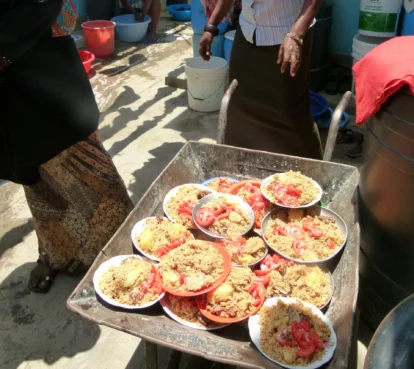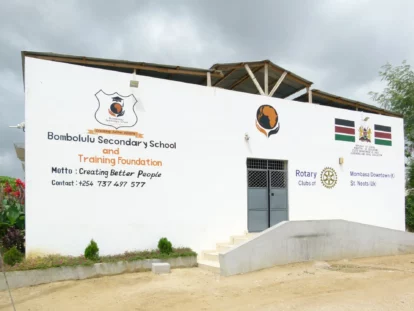Our History
How did the charity start?
Our chairperson trustee, Sally Searle, was on a visit to Kenya in 2011 and came across the original Little Faces kindergarten school and met Mary, the head teacher. There were just over 30 children being taught in a tin shack with mud floors, no toilets and not much in the way of reading or writing materials.
Sally has a background in charity work in the corporate sector, and back in the UK she went to work to form the Little Faces Schools, Kenya charity, that’s our previous name. With no paid staff, just with a lot of hard work and much help from volunteers, the charity raised funds so the Little Faces school now teaches over 300 children.
-

This is the original tin shack -

The children had no proper equipment in their classrooms -

With the help of DHL staff and Rotary, the tin shack was replaced by a stone-built school

How has the Little Faces school progressed?
It’s grown gradually over the years to its current level. Good exam performance means the school can now attract fee paying students, which has enabled it to become self-funding. We do still support some of the poorest children. A huge vote of thanks must go to Mary, the head teacher, who was largely responsible for all the work in Kenya to make the school such a success.
Education in Kenya overall has been a big hit and miss because of poverty levels, so Mary deserves a lot of credit for the success of the school.
During the 11 years the charity supported the school it has donated over £300,000, allowing the school facilities and staff to grow and support the local community. We’ve provided a lot of school meals over those 11 years, we reckon it’s over a million.
The new school
- In 2016 the charity purchased a small plot of land upon which to build which is now the secondary school.
- In 2020, with the aid of a Rotary International Global Grant, we began to build the new premises.
- In 2021 the charity purchased the plot of land immediately behind the school. This was because you cannot register a school without a playground.
-

The plot of land and the road at the frontage -

The Rotary clubs in Mombasa hands-on help -

Very deep foundations as the school is designed to be three stories high -

The completed school, the name has now changed -

The children happily playing in their playground -

The main building now complete – just finishing to do
What’s Bombolulu like, the area where the school is located
Bombolulu is a growing suburb to the east of Mombasa located on the coast. Originally a forested area, it grew up as typical small businesses and kiosks developed, many owned by disabled people. Over time it has developed so that it now has a population of over 61,000 people, from a huge range of Kenyan ethnic groups as well as Asian and Arab immigrants.
The local economy is growing slowly, with expansion in woodwork and building supplies, but most of the locals suffer from a lack of education, especially senior and higher education, which limits their career prospects. Youth unemployment is high.
Girls often work as home helps, some are forced into early marriage, and some have to resort to prostitution so their families can eat. Many young boys work in the boda boda motorcycle transport industry, the Kenyan equivalent to taxis, some will turn to crime.
Many people live in shanty accommodation, without running water, power or basic sanitation. The local hospital is expensive and well beyond the financial reach of any of the families of our children. General medical facilities are basic for them, if available at all. There are few schools in the area, and following recent changes to the educational system, very few lower secondary schools have been accredited, hence there is a huge lack of available places.
If you Google Bombolulu, you are likely to find the listings dominated by the Bombolulu Workshop and Cultural Centre. It’s a thriving crafts workshop and a cultural centre to provide social and economic rehabilitation for people with disabilities. Its four sheltered workshops produce a range of jewellery, textile, wood and leather products of a very high standard and they also produce our school uniforms.